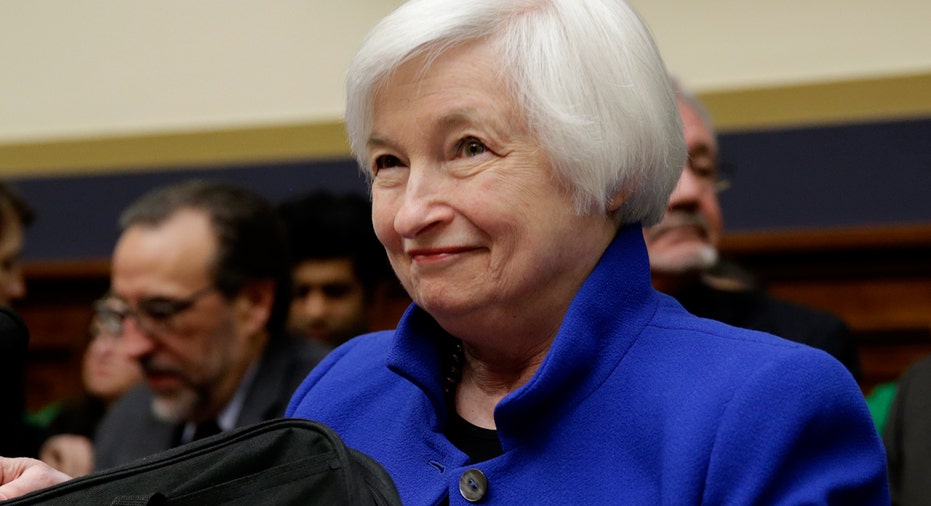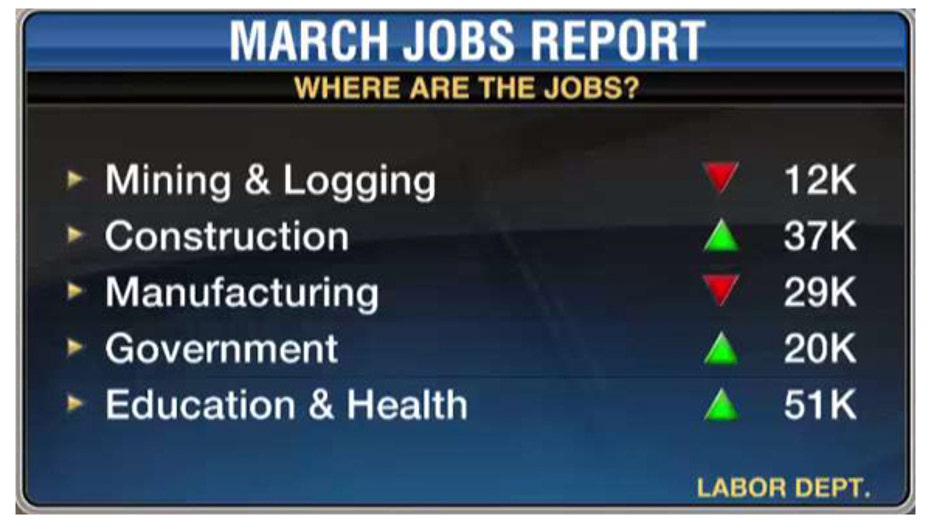March Jobs Report Gives Fed More Room to Wait

An extremely volatile start to 2016, which saw global markets nosedive and global-growth worries spike, didn’t have a significant, lasting impact on the U.S. labor market, according to employment figures released by the Labor Department Friday.
The closely watched March jobs report showed the U.S. economy added 215,000 jobs last month, more than the 205,000 new jobs expected. Digging deeper into the figures, the labor force participation rate ticked up to 63%, though it helped push the jobless rate up from 4.9% in February to 5% in March. Additionally, the underemployment rate – or the number of people working part time but seeking full-time work – climbed to 9.8% from 9.7% the month prior.
“The uptick in the unemployment rate isn’t alarming, especially when it occurs within the context of an increase in the participation rate,” Ron Sanchez, chief investment officer of Fiduciary Trust Company International, said. “That’s an encouraging sign, and the Fed is likely to view it as such.”
Sanchez called the report “spot on” in terms of expectations.
The non-farm payrolls report also showed that average hourly earnings, a closely-watched metric by the central bank, rose 0.3% during the month after contracting in February. The uptick was higher than expectations for a 0.2% rise in wages. Year over year, wages were up 2.3%.
Wages have been a sticking point for the Federal Reserve, which has been slow to raise rates in the face of more challenging global economic conditions. The central bank opted to raise rates for the first time in nearly a decade, by a quarter of a percent, in December, and said it expected to raise rates four more times before the end of 2016. However, thanks to the tumultuous first quarter, the Fed backed off those plans, and Fed Chief Janet Yellen has remained dovish on future increases.
In a speech on Tuesday before the Economic Club of New York, Yellen said while she sees “broad-based improvement” in the U.S. labor market, she’s “somewhat surprised” there has not been more of an increase in average hourly earnings.
“I think consistent with the 2% inflation objective, there’s certainly scope for further increases in wages,” she said. “The fact that we’ve not seen any broad-based pick up is one of the factors that suggests to me that there is continued slack in the labor market. But I would expect wage growth to move up some.”
The March figures, Sanchez, said, should help give the Federal Reserve more confidence that the economy is continuing to work through the rough patch that was the first three months of the year, and that worries about a slowing global economy and the potential impact to the U.S. haven’t hit the labor market.

But, he said, it also helps give the Fed more reason to continue to be patient on future rate hikes.
“Though we saw an uptick [in wages] this month…it’s not really where the Fed wants to see it. It’s a sign that there is not enough pressure on wages, which allows them to be patient. This number allows Yellen to continue on that course,” he said.
To that point, David Lafferty, chief market strategist at Natixis Global Asset Management, which oversees $870 billion in assets under management, said the March jobs report was likely not strong enough for the Fed to signal to the markets it’s ready to hike interest rates again at its meeting later this month.
“I’m not sure the jobs report could have been in any way strong enough to put April on the table,” he said. “Maybe it could have been weak enough to take June off, but I think Yellen stepped on the report by downplaying expectations. And with the report coming in close to consensus, I don’t think it changed a whole lot.”
In addition to a lack of overwhelming wage increases, Lafferty pointed to the unexpected loss of jobs in the manufacturing sector in March. Factory jobs saw a decline of 29,000, compared to expectation for a pickup of 2,000. In February, the sector shed 18,000 jobs.
As Lafferty explained, regional Federal Reserve surveys, including those from New York, Milwaukee, Chicago and St. Louis, have shown continued improvement in the sector. Further, the latest read on U.S. manufacturing growth from the Institute for Supply Management, also out Friday morning, showed growth for the first time since August. The ISM gauge rose above the line of 50, which separates expansion from contraction, to 51.8 from 49.5.
Lafferty attributes the divergence largely to a range bound U.S. dollar, after having peaked in March of last year, and inventory levels that are likely not building as fast as they once were. To that point, the ISM new orders index reached its highest level since November 2014.
“Another effect that’s going on is that employment numbers tend to lag a bit. The upturn in sentiment typically occurs before any jobs increases would,” he explained, adding that the April employment report could reflect improving conditions in the manufacturing sector.



















